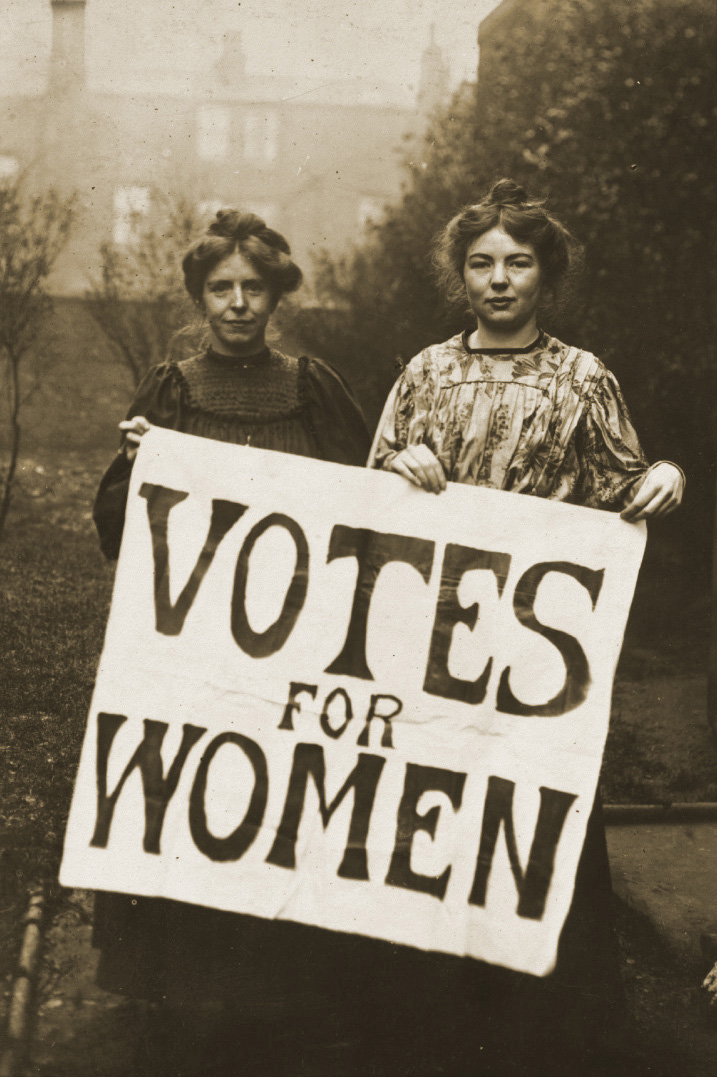What is the Difference Between First Second and Third Wave Feminism
The key difference between first second and third wave feminism is that the first wave feminism was mainly about suffrage, and the second wave feminism was about reproductive rights, whereas the third wave feminism was about female heteronormality.
All three of these feminist movements started as a result of the marginalization of women in the patriarchal culture. The first-wave feminism took place during the 19th and early 20th centuries, and second-wave feminism began in the early 1960s. Meanwhile, the third wave started during the 1990s.
CONTENTS
1. Overview and Key Difference
2. What is First Wave Feminism
3. What is Second Wave Feminism
4. What is Third Wave Feminism
5. First vs Second vs Third Wave Feminism in Tabular Form
6. Summary – First vs Second vs Third Wave Feminism
What is First Wave Feminism
First-wave feminism refers to the feminist activity that took place during the 19th and early 20th centuries in the Western world. This focused especially on securing women’s right to vote and other legal issues. This movement inspired the later feminist movements as well. This movement officially began at the Seneca Falls convention in 1848 by Elizabeth Cady and Lucretia Mott. It began when three hundred men and women assembled for equality for women. They wanted to change the prevailing social beliefs about women. According to the then existing beliefs, women’s place was their home, and their job was only to tend their husbands and children. The movement opposed these ideas.

Figure 01: Women’s Suffrage
The Seneca Falls declaration involved the natural equity of women, which highlighted equal access and opportunity for women. This declaration, at the same time, paved the way for the suffrage movement. They were supported by Black women abolitionists, such as Maria Stewart, Sojourner Truth, and Frances E. W. Harper. They all were agitated for the rights of women of colour. With them, this included a large number of white, middle class, educated women.
As a result of this movement, in 1920, Congress granted women the right to vote through the 19th Amendment. However, New Zealand was the first country to allow women to vote; they granted that right in 1893. The other countries such as Australia-1902, Finland-1906 and United Kingdom (women above 30)-1918 followed after that.
What is Second Wave Feminism?
Second-wave feminism refers to the feminist activity that began in the early 1960s. This took place in the Western world and lasted for two decades. This began as a protest in the 1968 Miss America pageant to object to its demeaning patriarchal outlook of women. Sexuality, workplace, family, marital rape, domestic violence, and reproductive rights were the main concerns in this movement. It also changed some prevailing divorce and custody laws.

Figure 02: President John F. Kennedy signing the Equal Pay Act into Law
The second wave criticized the male-dominated cultural practices in society. The women gathered in feminist-owned places like bookstores, restaurants and credit unions to discuss these matters. As a result of this movement, several victories were gained. These include The Equal Pay Act, which prohibited the gender pay gap, giving married and unmarried women the right to use birth control, and Title IX giving women the right to educational equality.
What is Third Wave Feminism?
Third-wave feminism refers to the feminist activity that began in the United States in the 1990s. It continued till the fourth wave in 2010. This movement was also identified in America as ‘grrl feminism,’ and in Europe, as ‘new feminism’. This new feminism is identified by local, national, and transnational activism in areas such as violence against women, body surgery, trafficking, self-mutilation, and pornification of the media.

Figure 3: The First Slutwalk
By the third wave, females were more capable and strong social agents. This movement was also influenced by post-colonial and post-modern thinking patterns. This movement weakened the notion of ‘universal womanhood’. The third wave valued individualism in women and their diversity. Because of this movement, new feminist theories like sex-positivity, intersectionality, vegetarian ecofeminism, post-modern feminism and transfeminism arose.
What is the Difference Between First Second and Third Wave Feminism?
The key difference between first second and third wave feminism is that the first wave involved female suffrage, while the second wave involved reproductive rights, and the third wave involved female heteronormality.
The following infographic lists the differences between first second and third wave feminism in tabular form for side by side comparison.
Summary – First vs Second vs Third Wave Feminism
The first wave of feminism started in the 19th and 20th centuries, and it was to gain the right for females to vote. The second wave started in the 1960s, and it was mainly about female reproduction, sexual rights, getting equal pay and being safe from domestic violence, including marital rape. The third wave started in the 1990s and lasted for about two decades. This movement was to challenge female heteronormativity and to celebrate the variations of class, race, and sexual orientations. Thus, this is the summary of the difference between first second and third wave feminism.
Reference:
1.“First-Wave Feminism.” Wikipedia, Wikimedia Foundation.
2.“Second-Wave Feminism.” Wikipedia, Wikimedia Foundation.
3.“Third-Wave Feminism.” Wikipedia, Wikimedia Foundation.
Image Courtesy:
1. “Annie Kenney and Christabel Pankhurst” By Unknown author – Hastings Press (Public Domain) via Commons Wikimedia
2. “American Association of University Women members with President John F. Kennedy as he signs the Equal Pay Act into law” By Abbie Rowe – JFK Presidential Library and Museum (Public Domain) via Commons Wikimedia
3. “Toronto-Slutwalk” By Anton Bielousov – Own work: Slutwalk (Toronto, ON) (CC BY 3.0) via Commons Wikimedia
ncG1vNJzZmivp6x7pbXFn5yrnZ6YsqOx07CcnqZemLyue9ahmK1lmah6tbTEZpuinpaav6a6wp5km52krLKmuoyfoKurpGLApq%2FOp5tmmZ6ZerW0yKubZq%2BRq7JussSmoKeho6J8